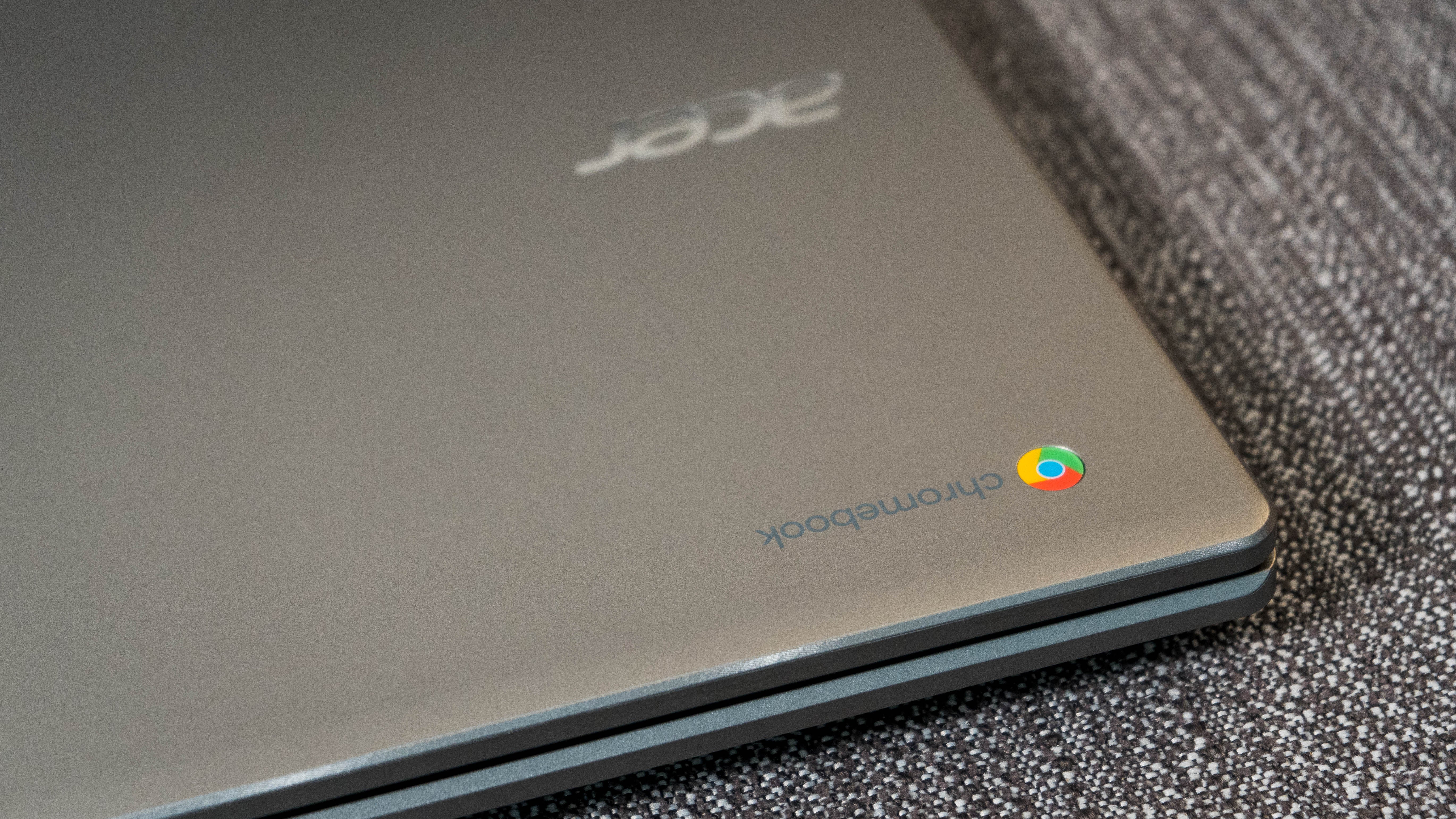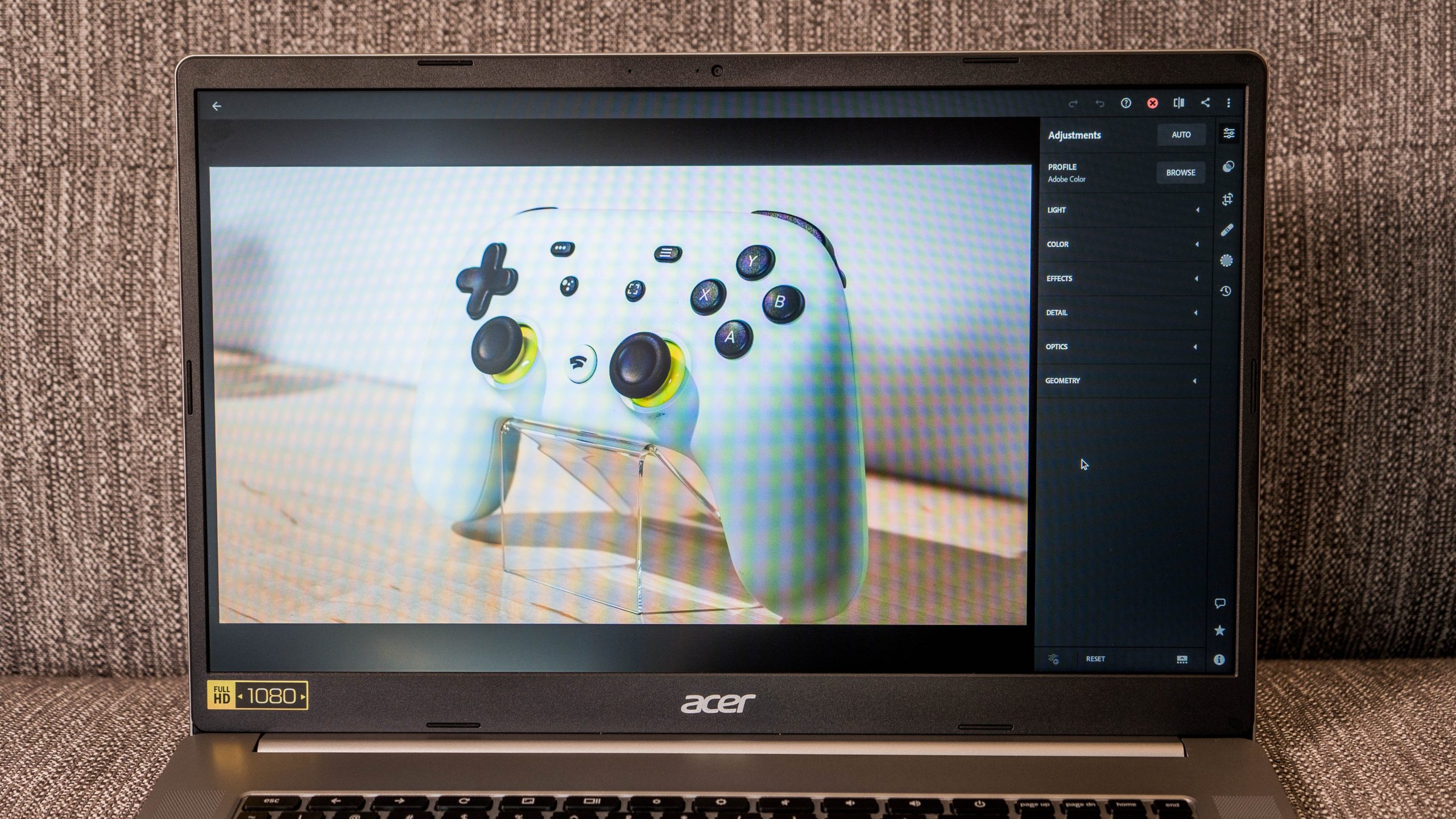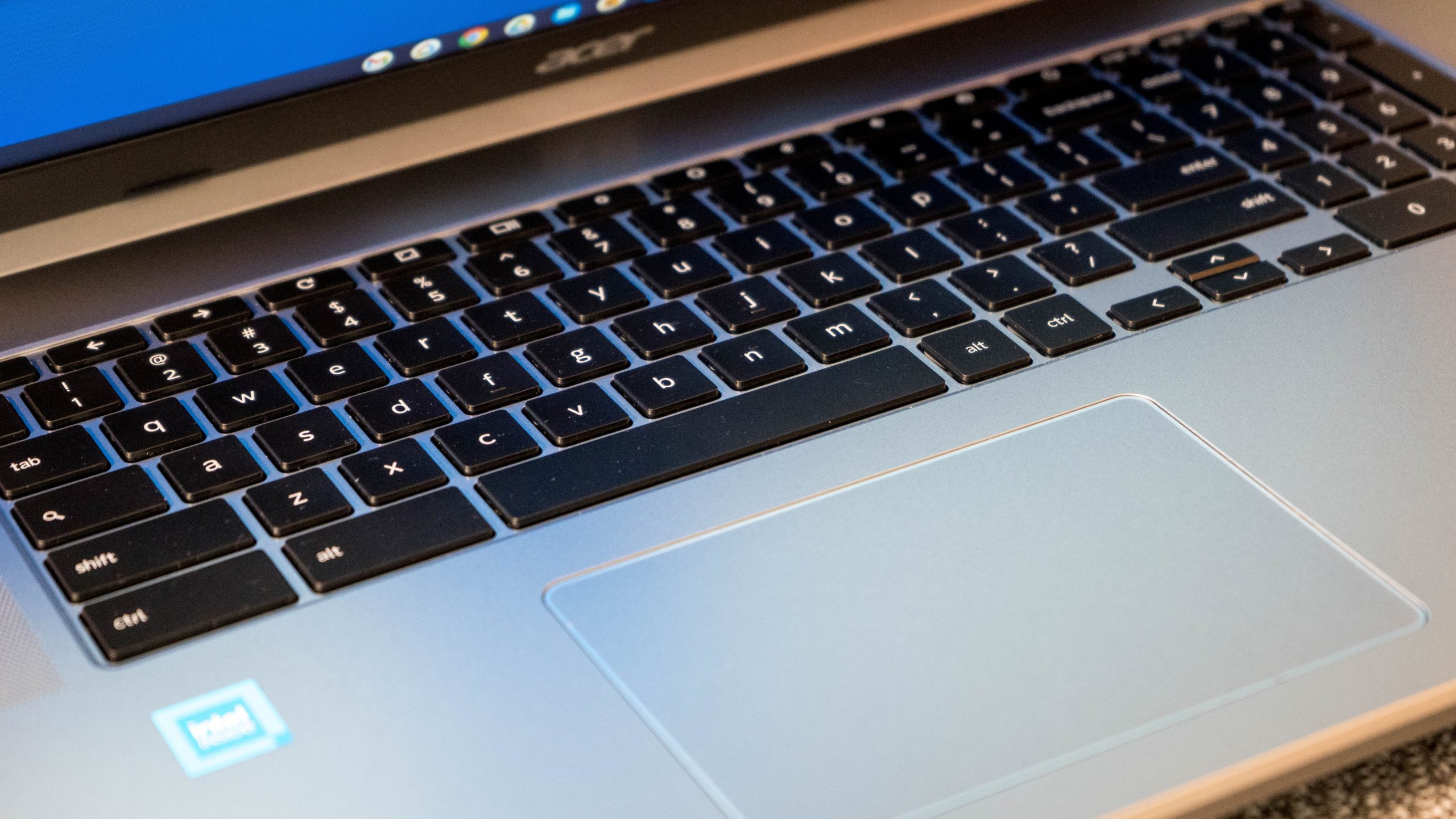It might seem like an antithesis to the way you should be using a Chromebook, but the decidedly ginormous Acer Chromebook 317 is best used while sitting at a desk. And really, that’s the point behind the world’s first 17-inch Chromebook.
Chrome OS isn’t a desktop operating system in the traditional sense. It’s meant to be portable and pawed at, which is why so many of the Chromebooks you see are convertible laptops. But since not everyone is using Chrome OS in that way, it’s about time for a Big Arse Chromebook to accommodate the masses. Think of all the kids who had to hunch over their desks during the height of the pandemic.
The Acer Chromebook 317 is very entry-level. At its starting price of $US380 ($519), this laptop is more than substantial for browsing the web, getting work done (including writing this blog) on its full-size keyboard, and bringing its big screen into a pillow fort to watch a movie. Just be sure to have an external mouse on hand, because the trackpad is something to be reckoned with.
Editor’s Note: Stay tuned for local Australian pricing and availability.

Acer Chromebook 317
What is it
A Chromebook with a giant screen.
Price
$US380 ($519)
Like
Big-arse display, comfortable full-size keyboard, ports galore
Dislike
Battery life could be better, and so could the gigantic screen
The Acer Chromebook 317 reminds me of the “family computer” back in the day. Not only is it the right size to be stationed in the part of the house where all the keys and mail get dropped off at the end of the day, but it’s got ample ports for things you need to connect. There are two USB Type-C and USB Type-A ports, one on either side of the device, along with a headphone jack, a Kensington lock, and a microSD slot, which you’ll probably need to use because the Chromebook 317 starts with a measly 64GB of storage space.
As you can expect, this is a honker of a laptop. Weighing a little over five pounds and measuring at about 22.5mm thick, it’s not a portable computer in the traditional sense. Sure, you can quickly move it around as you need, and it doesn’t take up as much space as the whole computer and monitor situation. But it’s relatively heavy for a laptop! You don’t want to carry this thing on your back. It’s also not very comfortable to use on your lap. Again, the Chromebook 317 is best used at a desk.
The keyboard is one of the best parts of choosing a giant Chromebook. It’s ample and comfortable, and the spacing between keys isn’t vast enough that my long nails get caught in between. In a typing test, I managed about 93 words per minute. There’s even a number pad off to the left for meticulous data entry. However, I would have preferred the Page Up, Down, Home, and End buttons placed below the number pad instead of at the top. The Page Up button is too close to the Power button.
Oh My God, Becky, Look At Her Display

I was excited about the Acer Chromebook 317’s 17.3-inch display because I knew it would make working on Chrome OS a little easier. My suspicions were correct. The larger screen makes for slightly more screen space when moving between two windows, and I didn’t have to worry about them stacking on top of one another. There were too many times when I’ve moved to another computer simply because a Chromebook’s screen was too small to spread my work out. I didn’t have that issue with the Chromebook 317.
There is a bit of a caveat to the Chromebook 317’s giant display, however. The resolution remains capped at 1920 by 1080, so while everything is indeed bigger, it is not scaled up for size. As a result, there is a bit of softness to elements of the interface. The colour reproduction on the screen isn’t anything like the high-resolution display on Acer’s high-powered Chromebook Spin 713, either. Whatever you watch on video will look fine but dull. And even with 275 nits maximum brightness, images on webpages looked dimmer than when I’d glance at my external monitor.

The Chromebook 317 model that I reviewed does not have a touchscreen display, though there is one available at an additional cost. Chrome OS is best when there’s access to its touch mechanism, as the trackpads bundled with Chromebooks are usually too hard to use. The plasticky trackpad on the Chromebook 317 is at least large enough that there’s enough runway before you hit the inevitable wall, which is the same sensation I described when using the flagship Chromebook Spin. I suggest an external mouse either by way of a USB dongle or Bluetooth, especially if you’re doing data entry or you like to move fast.
A Chromebook With Just the Essentials
The Acer Chromebook 317 doesn’t have the most powerful innards. Its Jasper Lake Intel processor is for use within inexpensive notebooks intended for the education market. It’s definitely limited with what it can do with its 1.1Ghz Intel Celeron N4500 processor and 4GB of RAM. The disparity is hugely noticeable when comparing the benchmark numbers against a much higher-powered Chromebook, such as Acer’s Chromebook Spin 713 with a Core i5-1135G7 processor, like in the model I reviewed.
Since Chrome OS is essentially a browser in operating system form, most Chromebook benchmarks are web-based. In WebXPRT, which tests standard HTML5- and JavaScript-based functions within the browser, the Chromebook 317 measured around 122, compared to the Spin’s whopping 704. In CrXPRT 2, which is effectively the same test but at the actual Chromebook system level, the device ranked in around 72, whereas the Spin ranked at more than half of that at 160. A higher number means the system is a better performer in both these tests, though that fact rings true even as you use the Chromebook 317.
I had no problem browsing and downloading files with the world’s largest Chromebook. Editing RAW images based in the Cloud in Adobe Lightroom was a cinch, even with the finicky touch-hybrid controls. It took a full second before the edit would show on screen, however, and even with an external mouse, the lack of touchscreen support makes touch-friendly apps a slog to use.
I ran the Android version of the GeekBench 5 test on the Chromebook 317. It tested an average of 613 in single-core tests and 1114 in multi-core tests. Compared to the last generation, the Celeron N4020, it’s a nearly 70% increase in performance across the board.
Android apps were a little less smooth sailing, anecdotally speaking. Exporting a video from InShot to Instagram, for instance, didn’t always work, with the latter often crashing on me. Using Android apps on a Chromebook without a touchscreen can also be challenging. I had some issues navigating between portrait-only apps with just the Chromebook 317’s trackpad.
The Chromebook 317’s 3-cell battery is no better than the battery you’d pay for in a higher-performing Acer Chromebook. Acer advertises a maximum run time of 10 hours. But in Gizmodo’s standard battery rundown test, it petered out at just under six and a half hours. At the very least, the laptop was good about holding on to its battery life on standby. And the system woke up quickly every time.
Do You Need a Gigantic Chromebook?

For $US380 ($519), the Acer Chromebook 317 is not a bad deal if what you’re after is a generalized computer that can accommodate anyone who needs to use it. I could also see a higher-specced version of this model working for a dorm-dwelling college student who doesn’t need to take a laptop to class but needs something with ample screen size back at headquarters. For younger kids schooling at home, combining a giant screen and an HD webcam with an 82-degree wide-angle lens could help make them feel more like a part of the virtual classroom than the usual gamut of tiny 11-inch Chromebooks.
Acer’s family of 17-inch Chromebooks is meant for the budget buyer who wants a big screen built into the package. Two other versions of the Chromebook 317 will go on sale, including a middle-of-the-road configuration with backlit keys and a quad-core Celeron N5100 with 8GB of RAM. The second is a touchscreen version with a Pentium N6000. If you’re after a convertible Chromebook with better performance, consider spending $US100 ($136) more for a 64GB Asus Chromebook Flip C434.
